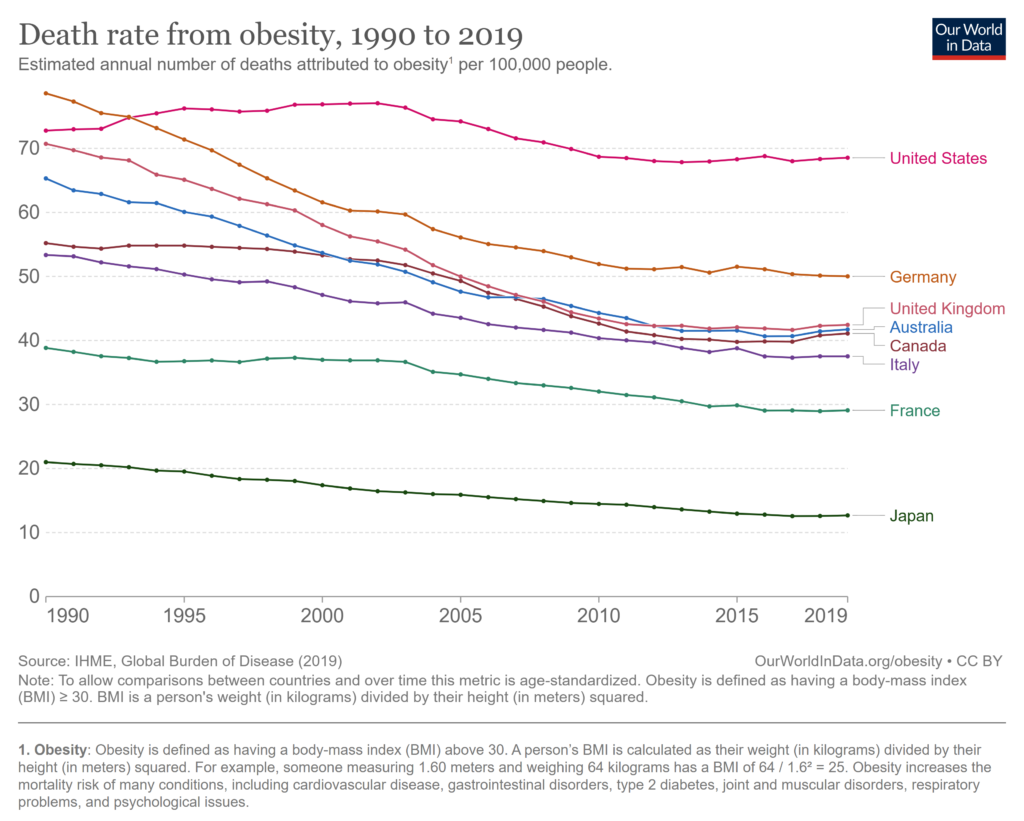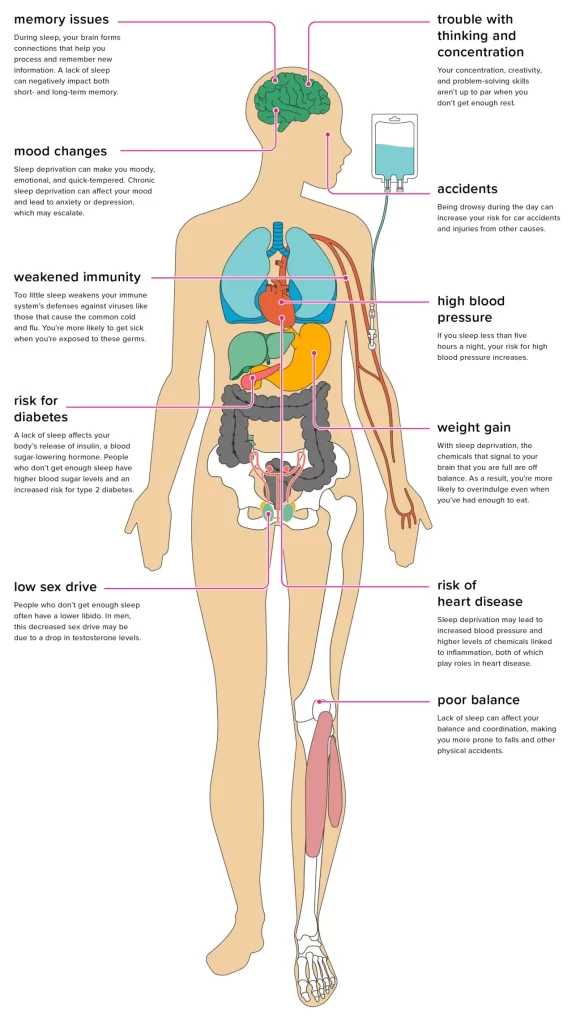
A Path to Better Health
One of the wonderful things about life is that we are all in control of our own health and well-being. This is a powerful position to be in and the path to better health is usually right there in front of us. We just have to take the first steps.
We often take for granted that we are in the driver’s seat and capable of taking full ownership of our health. Each of us face unique challenges and varying external factors. But we all can make improvements no matter where we are today.
I’ve placed a greater emphasis on my own health in recent years and believe that I’ve established a great foundation for health.
I’ll use this article to present the key things that I focus on in hopes that it helps you establish your own path to great health. I’ll also discuss how you may be able to fit these components into your busy life.
Are you ready to blaze your path to better health?
Let’s hop right in!
Contents
Establish Baselines

The great thing about the automobile is that they are a compilation of several complex systems integrated together in complete harmony. The results are a single machine capable of performance we humans can only dream of. Mechanics, electronics, and technology are just a few of these systems that work so well together.
As such, it turns out that we humans are much the same in that we are also composed of some pretty sophisticated systems.
For example, our bones and joints compose a near perfect mechanical system that allows us to move gracefully through the world. At the same time, our brain and nerves form an intricate electrical network that operates as the control system humming along behind the scenes.
Perhaps one advantage that the automobile has that we humans lack is the monitoring and alert system that registers a check engine light when something underneath the hood goes wrong.
I use this analogy to highlight the fact that we humans don’t always have a way to know that something is off with our health. Sure, we may get sick or not feel well at times. But there are instances when we have serious issues going on without us having the slightest suspicion.
This is where connecting with a primary care physician can help. The first step along your path to better health should be to establish care with a physician and measure your current health baselines.
Doing this is akin to performing diagnostics on your car. You’ll uncover any potential issues and be able to keep track of how things progress over time. Moreover, you’ll also be in a position to take any actions that will help you move forward on your path to better health.
I took this step back in 2019 and it probably saved me from having some serious issues with my heart down the road.
Diet & Nutrition Power You Forward Along the Path to Better Health
You will probably notice a trend in that I talk a lot about diet and nutrition. As far as I am concerned, diet and nutrition is unquestionably the most important factor for health.
I say this because eating is the thing we do most frequently. What we eat is also the most readily changeable factor that most of us can tweak to improve our health.
At the same time, diet and nutrition is a big factor driving obesity – which is one of the primary drivers of short life expectancies in America.

How to Master Diet & Nutrition
Learn About Healthy Eating
I believe that a lack of education and understanding are top reasons why the American diet is so poor. There is probably a good reason for this as there is just an impossible amount of conflicting information out there.
The following are a few simple things you can do to find some real answers:
- Consult a registered dietitian. This is probably the best route as dietitians are experts on the subject. The drawback is that this may be costly and not practical for everyone.
- Do your own research. The challenge is sifting through all of the internet fluff to get to some real practical answers. But it can be done. In general, more self-education is better than no self-education. Spending time with some good books or internet sources could help.
How to Build a Healthy Eating Habit
You’ve learned what healthy eating is and can now put your knowledge into action. Try to find a few simple meals that you can make at home and begin focusing on those. Over time you can add more and more recipes to your routine.
I don’t participate in any restrictive diets that prohibit certain foods. Instead, I focus on a 90/10 approach where I eat healthy 90% of the time. I then give myself permission to splurge the other 10% of time.
For people who eat a standard 3 meals per day (21 per week), this comes out to 1-2 splurge meals per week. I personally have 1 splurge meal which usually consists of Chipotle and 2 glazed donuts from Publix.
The overall point here is to know what healthy eating is and do it most of the time while giving yourself permission to have a little more excitement from time to time.
Exercise & Movement
The path to better health is paved by way of exercise and movement.
Working to make improvements in these two areas is critically important as the CDC reports some grave statistics about the activity levels of many Americans. On balance, 60 percent of U.S. adults are not getting enough activity on a daily basis. Additionally, 25 percent are getting no activity whatsoever.
There is a lot more data making a compelling case for more movement – but much of it is beyond the breadth of this discussion.
For the sake of time, I will simply call out the fact that sitting and being sedentary is linked to higher death rates, cardiovascular disease, cancer, and diabetes.
The Difference Between Exercise & Movement
In a world where the 10k step goal has taken hold thanks to fitness trackers, we may have lost sight of what it means to really be active. That said, I want to specifically state for the record that there is a distinct difference between exercise and general movement.
Exercise is something you deliberately do and is something that places greater than normal demands on your body to accomplish.
Contrarily, movement is simply basic physical activity that we do to carry out the process of living our lives. Think things like walking to our cars or up a flight of stairs at work.
Scientifically speaking, there is a metric that captures the differences between exercise and movement called non-exercise activity thermogenesis or NEAT for short.
We’ll return to NEAT in a few moments, but for now just understand that it measures the amount of energy you burn doing everything outside of exercise.
My Exercise & Movement Regiment
I’ll start by sharing an outline of my schedule as an example to show differences between exercise and movement.
Weekdays (Mon- Fri):
- Morning dog walk for 20 – 30 mins.
- Cardio at home 15 mins.
- Bike ride to gym 12-15 mins.
- Workout at gym 1 hour, 15 mins.
- Bike ride back home from gym 12 – 15 mins.
- Evening dog walk 30 – 40 mins.
Weekends (Sat – Sun)
- Morning and evening dog walk for 25 – 45 mins.
- Usually some form of low intensity steady state cardio such as a long bike ride.
I don’t show this as a way to pat myself on the back or to make others feel inferior. I use it as a real life example to drive home what a schedule consisting of both exercise and movement really looks like.
Getting More Exercise & Movement
The key thing to point out is that the only portions of my schedule that I consider exercise are the cardio sessions, the workouts at the gym, and the low intensity cardio on weekends which usually lasts 45+ minutes.
Movement in my schedule includes dogs walks, bike rides to the gym, and general life activities. I don’t count these as exercise though.
Having an understanding of the differences between exercise and movement is important if you want to optimize your health. You should also recognize that both should be intentionally designed into your life as best as possible.
Not everyone will have the time or desire to have a schedule like mine – and that is totally acceptable. But everyone should strive to cover both components in whatever way is feasible on a regular basis.
What should no longer be acceptable is for us settle on the idea that something as basic and natural as walking is the ceiling of our exercise requirements.
Sorry, no more settling for 10k steps as the upper limit.
More General Movement
I intentionally seek out opportunities to move my body. I see things like chores, grocery trips, and yard work as opportunities to build more NEAT.
As mentioned earlier, NEAT is all of the energy we expend doing tasks that aren’t actual workout sessions. You want to start focusing on all of the little opportunities to move your body throughout the day because they really add up.
Walking Sessions
An easy way to get more movement is by going on walks. Aim to get several lengthy sessions in per week and aim to make this a consistent habit.
Walking is one of the most basic human functions and should therefore be established as your base level of physical activity rather than your primary form of exercise.
Cardio Sessions
Cardio workouts come in many formats and durations and can be classified as either low intensity steady state or high intensity training. Both serve different functions depending on your needs.
Steady state cardio is great for general physical fitness and working the cardiovascular system and high intensity cardio is better for fat burning and building muscular endurance.
Either route is good to take and some cardio is always better than non, so figure out what works best for you and stick with it.
Weightlifting Sessions
I covered a lot of detail about weightlifting in my guide about building muscle, so I won’t belabor the point here. Still, I’ll emphatically say that everyone can benefit from some weightlifting.
If you are currently doing no weightlifting, then aim for 1 day per week. If you are doing some weightlifting then aim to be consistent with 2 – 3 days per week which is a great foundation as a path to better health.
High Quality Sleep Leads to Better Health
Sleep enables the body to restore itself and is critically necessary for good health. That said, more than one third of American adults get less than the recommended 7 hours of sleep per night.
The outcomes from getting inadequate sleep are expansive and should place a priority on us all not only getting more sleep – but getting more high quality sleep.
Sleep is the foundation for life and we simply cannot function optimally without it. Therefore, good sleep is a mandatory component if one seeks a path to better health.
Negative Impacts of Sleep Deprivation

How to Get Better Sleep
One of my favorite resources for getting better sleep is Huff Post’s very own Ariana Huffington’s Sleep Revolution. This is the guide that I used when I first began improving my sleep and I can say that it is an invaluable tool.
If you don’t have time to read an entire book, you can refer to Andrew Huberman’s Toolking for Sleep. This is another amazing resource with detailed steps on how to become a master sleeper.
Studying and implementing the suggestions from both resources would be the optimal path if you can. Since learning more about sleep, I’ve gone from averaging around 6.5 hours of sleep per night to now getting closer to 7.5.
Averaging an additional hour of sleep per night is substantial and has made a noticeable difference in my mental and physical health.
Best nootropic: sleep
— Andrew D. Huberman, Ph.D. (@hubermanlab) September 16, 2021
Best stress relief: sleep
Best trauma release: sleep
Best immune booster: sleep
Best hormone augmentation: sleep
Best emotional stabilizer: sleep
Sleep Tools: Ep. 2 Huberman Lab Podcast, HLP interview w/Matt Walker https://t.co/TphgkozQyg
Better Mental Health
One of my commitments for this blog is to mostly talk about things that I have real life experience with, and improving mental health is no exception.
I briefly mentioned my own mental health in my rock bottom story, but I did not go into very much detail. In short, experiencing such a low point in life put a tremendous strain on my mental health and I had to dig myself out of the mental rut.
That said, I empathize with those who are wrestling with their own mental health challenges. I know how difficult it can be to not have a grasp on your own mind and thoughts.
We all understand how crucial this area is for establishing a path to great health. Instead, I’ll share the few things I’ve done over the years to make positive changes for myself.
Therapy
Therapy has worked wonders for my mental health over the years. I’ve had four different therapists since 2019. All have been different and each has helped me in a different way.
When I first walked into therapy, I was expecting some life shattering event to take place which did not actually happen.
What happened instead was a process of gradual shifts and changes within me. Therapy provided an opportunity to talk through various issues, identify patterns, and highlight possible solutions.
Some will argue that talk therapy has tremendous benefits and others will question it’s effectiveness. I will stand on the sideline and let them debate, but will tell you that has proven beneficial to me.
There are many ways to find a good therapist. You can find someone in your local area or use an online platform to unlock access to dozens of qualified therapist who are standing by to provide you with support.
Meditation
Shut off the mind completely they said. No thoughts whatsoever they said. Be as still as a rock and as tranquil as a lake without ripples.
These were all of the assumptions I had about meditation before learning more about it. And for some advanced practitioners, the things listed above are true. But meditation needn’t not be this way for many people.
Like most things, meditation is a practice that involves a constant cycle of learning, doing, and growing. It is not something you truly ever master as there is really no finite ending point to consider yourself done.
On the contrary, meditation is a journey of self-discovery and introspection that has proven to be an invaluable tool for me.
I have been meditating for about 3 years now and have practiced in several ways.
Where to Start With Meditation
I started my journey into meditation by joining a group that met weekly and was led by an expert practitioner. I did this for roughly 4 months before branching out on my own and now use an app to practice.
Study after study show that meditation has the potential to calm stress and anxiety, boost focus, and improve sleep. There are also many other potential benefits.
I highly recommend that you give meditation a try. Meditation can be done for little to no cost and from the comfort of your own home. There are many great apps to choose from on the market, so check out your app store and give it a try.
The most important thing is that you commit to the process for an extended period of time and be consistent. Give it a few weeks and see how things go.
Your Own Path to Better Health
This article featured a list of things that compose the foundation for my personal path of health. These are my focus areas, yet there are many more components to consider.
Hopefully these simple tips can help you begin paving your own path to better health. I also urge you to think about other things you can be doing to establish your own personal health plan and do not wait for life or for a doctor to dictate your next course of action.
As I mentioned at the start, we are all in our own driver’s seat and are all capable of blazing our own paths forward. You have all the ingredients necessary to take charge and move things forward but you must willingly take the reins and steer the ship.
Happy Trailblazing!
What are your top health tips and priorities for the months ahead? Drop a comment below and keep the discussion going!
